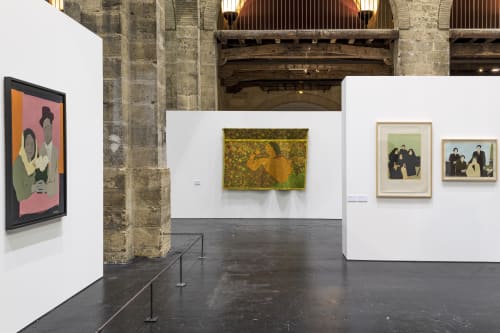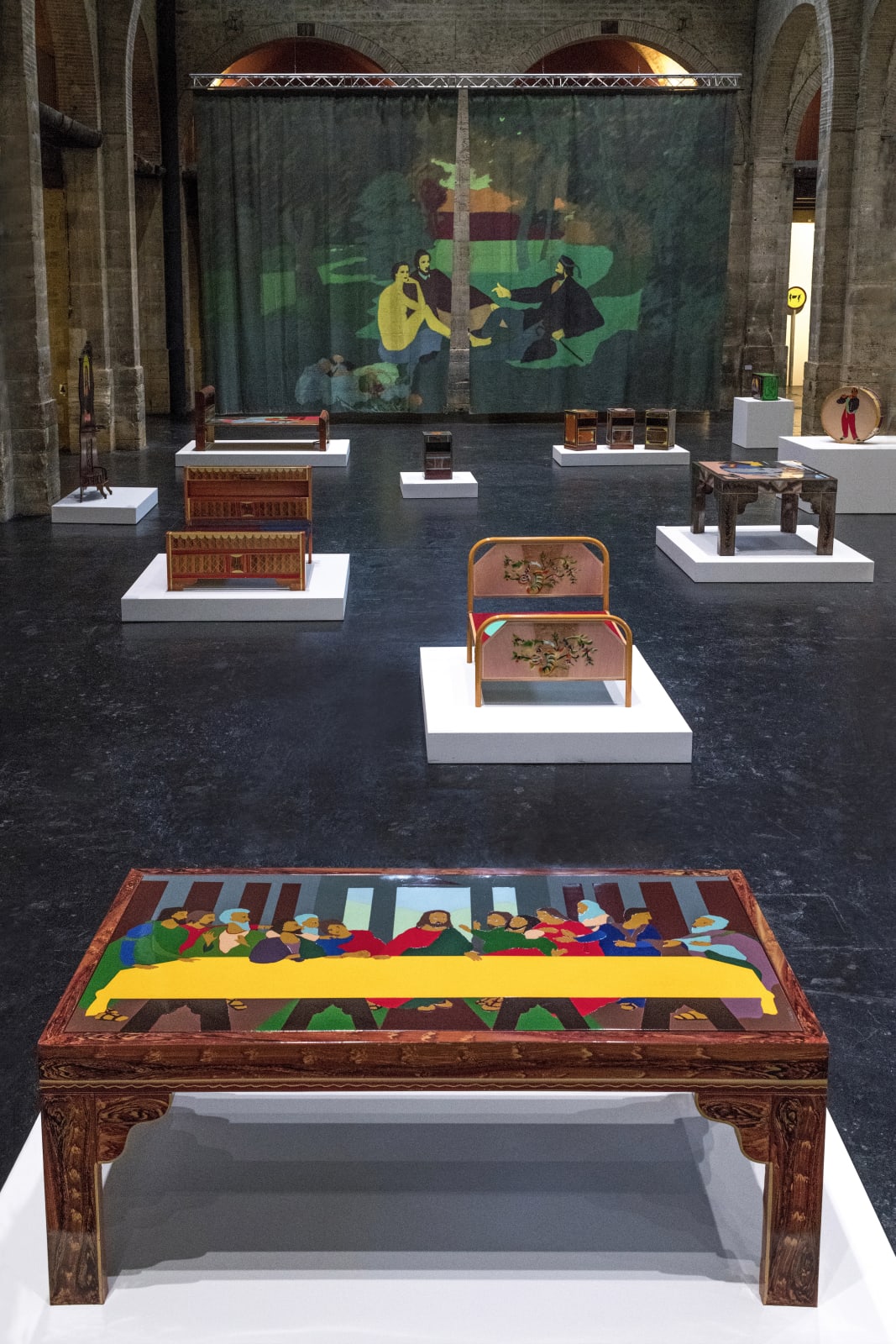An emblematic and fundamental artist of the Latin American art scene, Beatriz González has marked generations of artists and thinkers. Her work, which goes beyond the limits of painting by the multiplicity of the supports used, summons history, politics, humor, the private and the public.
In 1964, Beatriz González adopted a modus operandi that she would remain faithful to thereafter, turning an image from the Colombian press into a series of paintings. The archives she collects show that popular imagery shapes her work and constitutes a fertile ground for research and creation, from which she extracts folklore and the picturesque. Often relying on the photographic documentation of news reporters, some of Beatriz González's work also expresses the pain caused by violence and death. Regarding this aspect of her work, Boris Groys states that far from seeking neutrality through her appropriation of press images, "her painting remains personal and even intimate" insofar as "she finds a way to make the daily newspapers her own diary and, conversely, to make her own diary a political tool.
Beatriz González is also interested in the representation of icons of popular culture (from sports idols to politicians to religious leaders) and in the representation of indigenous cultures and pre-Columbian art. His productions, which sometimes appear as aided ready-mades, are declined on various supports including furniture and curtains. Always active, the artist, who ironically describes herself as a "provincial artist", accompanies the lively social and political changes in Colombia.
Bringing together paintings, drawings, prints, sculptures and installations, this first major retrospective exhibition of Beatriz González in Europe, will allow visitors to discover a collection of approximately 130 works created between 1965 and 2017.
Curator: María Inés Rodríguez









